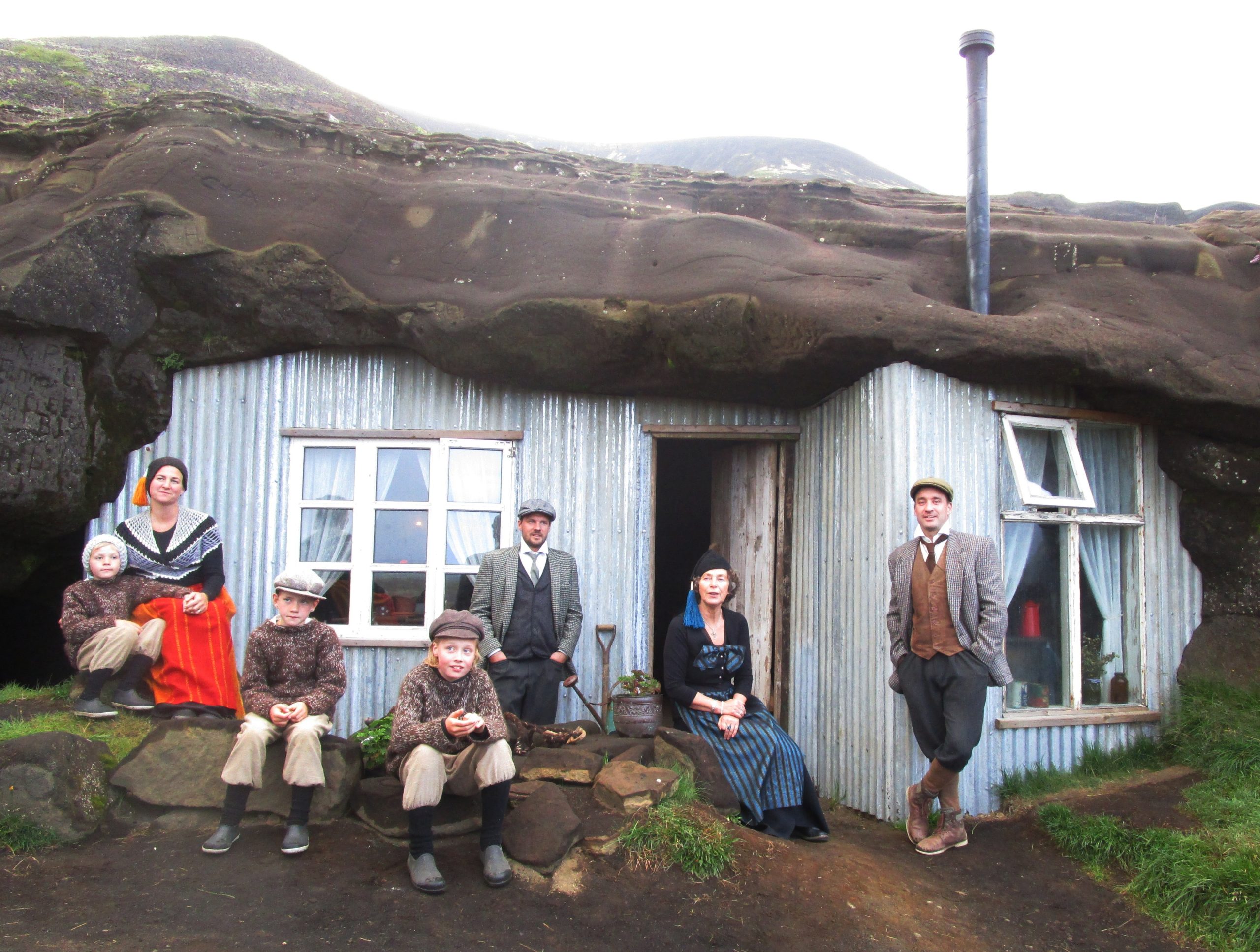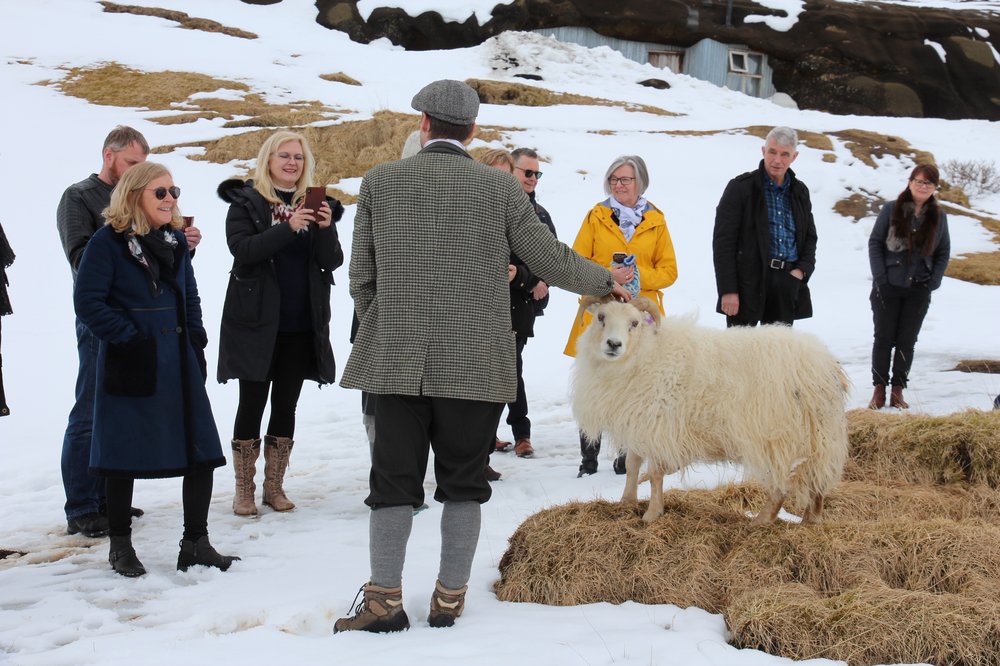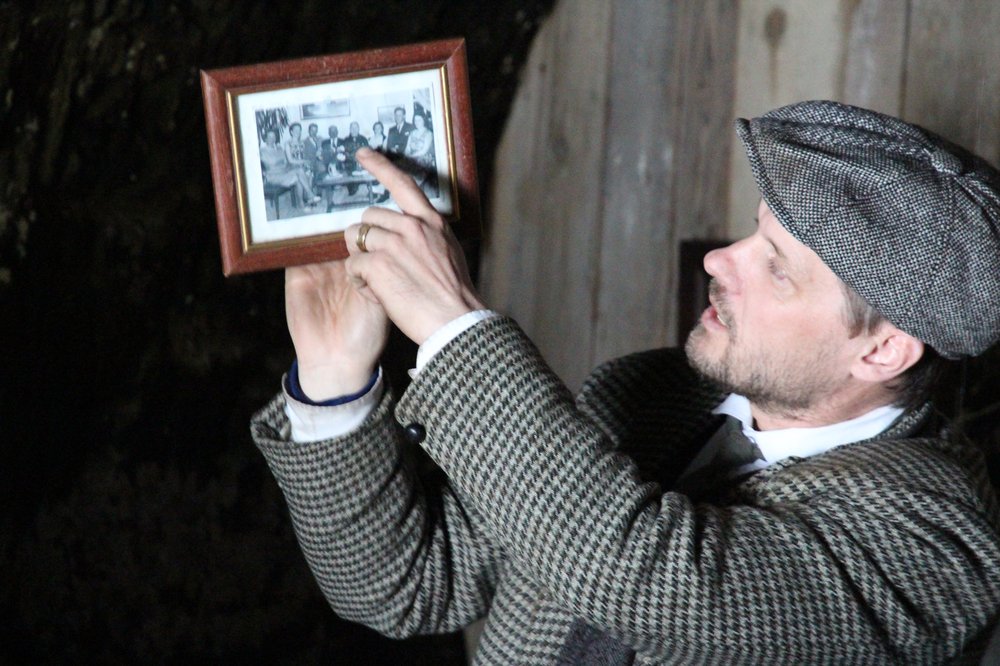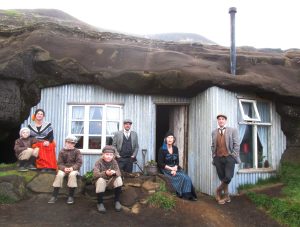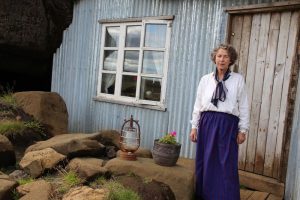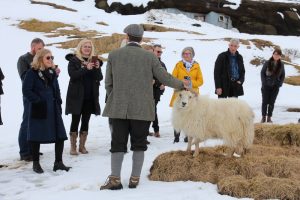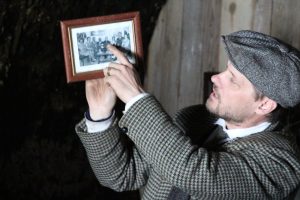The Cave People
Laugarvatnshellar are manmade caves between Þingvellir National Park and Laugarvatn Lake on the Golden Circle. Their origin is somewhat of a mystery. They were possibly made by the Irish monks (called Papar) who lived in Iceland before the Norse settlers arrived in late 9th century.
About 100 years ago, a young couple lived in the caves with their two children and livestock. They hunted ptarmigans and sold them in Reykjavík to earn money. The family also made money from servicing travellers; the caves were a pitstop for people commuting between the capital and countryside, and those who were on their way to see Gullfoss Waterfall and Geysir.
Laugarvatnshellar have been rebuilt to look like they did when the last “Cave People” lived there one century ago. Visit this unique living museum, take a 25 min guided tour of the caves and learn about the last residents’ lives, their loves and losses. The guide is dressed in the manner of Icelandic people in their better clothes about 100 years ago. Before or after the tour you can relax in the Cave Café for a cup of coffee and some traditional Icelandic treats.
The caves, which are only a 60-min driving distance from Reykjavík, are surrounded by spectacular nature. They add a new and interesting historical dimension to the Golden Circle tour.
Ten ideas for recreation on and around the Golden Circle:
- The Golden Circle is popular for a reason: Natural treasures Þingvellir National Park, Gullfoss Waterfall and Geysir Hot Spring Area are a must-see.
- Don’t miss the historical and cultural site Skálholt, an ancient episcopal see and school.
- Get wet! Apart from its many swimming pools, the area includes dive site Silfra, Laugarvatn Fontana Spa and the Secret Lagoon.
- Hike or bike in Reykjadalur, the hot river valley trail off Hveragerði, bathe in the river (where it’s safe), boil an egg in a hot spring and taste bread baked in the warm ground.
- Visit a greenhouse! Learn about the eco-village Sólheimar, the production of tomatoes at Friðheimar, mushrooms at Flúðir and taste their curious culinary creations.
- The region is known not only for its geothermal activity but also for its seismic activity; have a shake inside the earthquake simulator in Hveragerði.
- Learn all about the Icelandic horse at shows at Friðheimar, through stable visits at Sólvangur, and shorter or longer riding tours, for example with Eldhestar.
- History comes to life in the charming old houses in Eyrarbakki and in the new Selfoss Centre. At Árnessýsla Heritage Museum it’s easy to picture village life in times past.
- Have delicious Icelandic lobster (or langoustine, as it’s called) for lunch or dinner in one of the region’s coastal villages, like Stokkseyri or Eyrarbakki.
- Do a culinary tour of the region, taste traditional skyr at Skyrland in Selfoss or the Skyr factory in Hveragerði, visit micro-breweries, delight in handmade chocolates and – surprise, surprise – Ethiopian food!
For more travel tips, go to www.south.is

